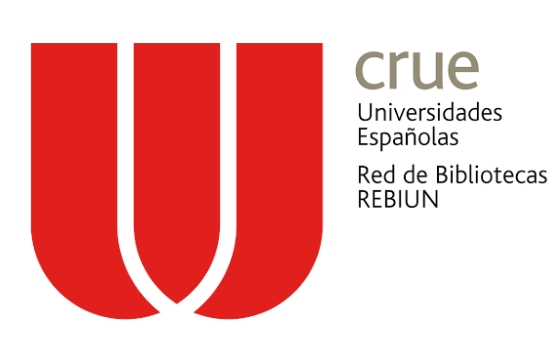Saberes Matemáticos Ancestrales: una mirada Etnomatemática al tejido en lana de ovejo
Ancestral mathematical knowledge: an Ethnomathematical look at sheep wool weaving
DOI:
https://doi.org/10.22267/relatem.22152.94Keywords:
Ethnomathematics, practice, ancestral knowledgeAbstract
is work was born as a response to the disarticulation between school mathematical knowledge and cultural practices developed in the Yanacona de Caquiona indigenous community, municipality of Almaguer, Cauca, Colombia. Faced with this problem, we sought to identify Ancestral Mathematical Knowledge (SMA) in sheep wool weaving, from a sociocultural perspective framed in Ethnomathematics, with a qualitative approach and ethnographic methodological fabric. The identification of SMA implied the participation of the researcher in the natural environment of the weavers, through the execution of activities such as negotiation, access and field work; using participant observation and semi-structured interview as techniques to obtain information. In this sense, among the findings it was found that in the practice of weaving SMA related to universal mathematical activities such as: measuring, counting and designing are present (Bishop, 1999). Also, it was possible to conceptualize a notion of SMA from a joint reflection exercise regarding what the knowledgeable consider as mathematical and ancestral within the fabric, recognizing in them, not only the ability to execute a practice, but also, and mainly, the ability to reflect on it. Likewise, it was possible to describe the process of elaboration of some sheep wool fabrics, discovering that 6 stages are developed to weave, and it was revealed that for the community of Caquiona this practice is synonymous with life and tradition, and that it contributes to its survival and transcendence over time.
Downloads
References
Álvarez, C. (2008). La Etnografía como Modelo de Investigación en Educación. Gaceta de Antropología. Universidad de Andalucía, 24(1), 1–15.https://repositorio.unican.es/xmlui/bitstream/handle/10902/4165/G24_10Carmen_Alvarez_Alvarez.pdf?sequence=1&isAllowed=y
Benavides, P. (2021). Sentidos de Escuela a Partir de los Docentes que Incorporan las Tic [Tesis Doctoral. Universidad Del Cauca]. http://repositorio.unicauca.edu.co:8080/xmlui/bitstream/handle/123456789/3622/Sentidos%20de%20escuela%20a%20partir%20de%20los%20docentes%20que%20incorporan%20las%20TIC.pdf?sequence=1&isAllowed=y
Bishop, A. (1999). Enculturación Matemática: La Educación Matemática desde una Perspectiva Cultural. Paidos https://books.google.com.co/books/about/Enculturaci%C3%B3n_matem%C3%A1tica.html?id=6WlR7N1tpJMC&redir_esc=y
Bishop, A. (2005). Aproximación Sociocultural a la Educación Matemática (Universidad Del Valle (Ed.); 1st Ed.). Patricia Inés Perry Carrasco.
Blanco (2011). La Postura Sociocultural de la Educación Matemática y sus Implicaciones en la Escuela. Revista Educación Y Pedagogía, 23(59), 59–66.https://revistas.udea.edu.co/index.php/revistaeyp/article/view/8692/8006
Blumer, H. (1992). La Posición Metodológica del Interaccionismo Simbólico. 1–14. https://www.studocu.com/es-ar/document/universidad-siglo-21/psicologia-social/la-posicion-metodologica-del-interaccionismo-simbolico/11510460
D’Ambrosio, U. (1985). Ethnomathematics and Its Place in the History and Pedagogy of Mathematics. For the Learning of Mathematics, 5(February 1985), 44-48 (in 'Classics'). http://www.jstor.org/stable/40247876
D’Ambrosio, U. y Rosa, M. (2008). Um Diálogo Com Ubiratan D’Ambrosio: Uma Conversa Brasileira Sobre Etnomatemática. Revista Latinoamericana de Etnomatemática, 1(2), 88–110. http://Www.Etnomatematica.Org/V1-N2-Julio2008/Dambrosio-Rosa.Pdf
D`Ambrosio, U. (2013). Etnomatemática. Entre las tradiciones y la Modernidad (B. H. Ediciones Autêntica (ed.); 2nd ed.). Universidad Autónoma de Guerrero.
D’Ambrosio, U. (2014). Las bases conceptuales del Programa Etnomatemática. Revista Latinoamericana de Etnomatemática, 7, 100–107. https://www.redalyc.org/articulo.oa?id=274031870007
Gutiérrez, M. (2018). Fortalecimiento de los Saberes Ancestrales en la Universidad. 83. https://www.Upec.Edu.Ec/Images/Stories/Lotaip/2018/Junio/Anexos/M-1-Informativo.pdf
Guegia, A.Guegia, C. Guegia, G. Diaz, E. Caicedo, N.Calambas, L. Castro, H. Pacho, C. Parra, A. (2012). Nasa Fxi ’ Zenxite ’, Isa Wejxasa ’ Na ’ Tha ’ W Atxaha ’ Matemáticas en el Mundo Nasa (A. Caicedo, N. y Parra (Ed.); 2nd Ed.). El Fuego Azul.
Hammersley y Atkinson. (1994). Etnografía. Métodos De Investigación (Paidós (ed.); 2nd ed.). Traduccion de Mikel Aramburu Otazu.
Hernández, S. y Mendoza, C. (2018). Metodología de la Investigación: las Rutas Cuantitativa, Cualitativa y Mixta. Mc Graw Hill Education. https://Www.Academia.Edu/43711980/Metodología_de_la_Investigación_Las_Rutas_Cuantitativa_Cualitativa_y_Mixta
Martínez, O. Trujillo, C. Lomas-Tapia, K. Moreno-Vallejo, J. y Dávalos-González, V. (2019). Saberes Matemáticos Ancestrales de una Chakra Andina. Espacios, 40, 15. http://Www.Revistaespacios.Com/A19v40n36/19403615.Html
Palmer,M.A (2007). Interpretación Matemática Situada de una Práctica Artesanal. Tesis Doctoral. Universidad Autónoma De Barcelona.
Rockwell, E. (2009). La Experiencia Etnográfica Historia y Cultura En Los Procesos Educativos (Paidós (ed.); 1st ed.).
Downloads
Published
How to Cite
Issue
Section
License

This work is licensed under a Creative Commons Attribution 4.0 International License.
Once the article is accepted by the Latin American Journal of Ethnomathematics, the authors cede the rights to publish and distribute the text electronically, including storing it and making it available online.
The authors can distribute their own material without soliciting permission from the Latin American Journal of Ethnomathematics, whenever mentioning that the original version is found at http://www.revista.etnomatematica.org
Copyright © 2008, Latin American Journal of Ethnomathematics
All contents of the Latin American Journal of Ethnomathematics are published under the _ and can be used freely, giving credits to the authors and to the Journal, as established by this license.











